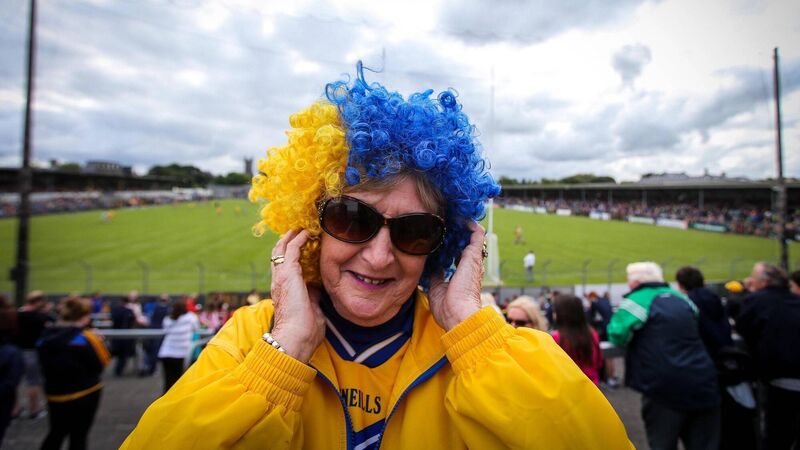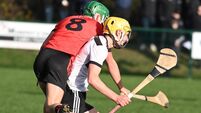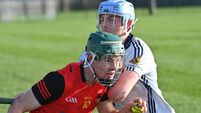Christy O'Connor: How important is home advantage in the hurling championship anymore?

No place like it: Clare fan Mary Carey fixes her hair ahead of a championship game in Cusack Park, Ennis. Home advantage is still set to be a significant factor for Sunday’s Clare-Limerick and Waterford-Cork games.
When it was confirmed in January that Cork’s championship game against Clare would be moved from Páirc Uí Chaoimh to Thurles, Kieran Kingston immediately doused the sparks of public frustration threatening to ignite into a blaze.
“Being brutally honest,” said Kingston, “if you had a straw poll tomorrow among the Cork players about playing in Cork or Thurles, it’d be 50-50.”
Days later, Anthony Nash weighed in on the debate by making the distinction between Thurles and Páirc Uí Chaoimh, not Thurles and Páirc Uí Rinn. “We love playing in Thurles, absolutely,” said Nash. “But if you were offering a Cork player a game in Páirc Uí Chaoimh or Thurles, the straw poll wouldn’t be 50/50. Losing a home game in a competition that is so tight is massive.”
Conceding home advantage was used as another rod for Cork’s back after they lost to Clare. It may not have made any difference considering how well Clare are playing and how poor Cork are going but home advantage is considered so precious in the round robin that giving it away was deemed sacrilegious.
On the otherhand, how important is home advantage anymore? Is it as valuable as the perception deems it to be? The numbers suggest it isn’t.
In the opening season of the round robin in 2018, there were only five away wins in Munster and Leinster, which meant a 75% success rate for the home team.
However, the home team only won 40% of their games in 2019. Three draws added to the anomaly but those numbers have more or less held up in this championship – to date, the home team has won 46% of their games, with one draw.
There has been an imbalance with the Leinster championship but some of those home wins were still tight games; Dublin beat Laois by two points in Parnell Park; Galway edged past Kilkenny by one point in Pearse Stadium.
Galway should have beaten Wexford in Wexford Park. They would have if referee Thomas Walsh hadn’t over-turned a late Conor Cooney free, blowing for a throw-in after penalising Coney for taking too long over the free in the 75th minute.
When Lee Chin equalised 90 seconds later, Chin took longer over that final free than Cooney had. “I think on the overall balance of it,” said Donal Óg Cusack on ‘The Sunday Game’ "the home town aspect absolutely came into it.”
It’s hardly a phenomenon peculiar to hurling, especially when home advantage counts across the sporting world. There are any amount of reasons why the home team is more likely to win than the away team; greater familiarity, comfort and logistical ease with the venue; unintended refereeing bias towards the home team.
Research by Nevil & Holder in 1999 suggested that the crowd may influence officials in subconsciously favouring the home team. Some of the studies done by Thomas Dohmen in the German Bundesliga concluded that home bias is mitigated when the fraction of supporters of visiting teams rises.
The same study also showed that referees displayed bias in stoppage time decisions and make fewer correct penalty kick decisions if the match is played in a stadium without a running track separating the stands from the pitch. This indicates that social pressure is more intense when the crowd is closer to the referee.
That closeness of the players to the supporters adds to the sense of claustrophobia and pressure often heaped on away teams at hurling venues. Cusack Park in Ennis is one of the biggest pitches in the country but away managers and players routinely refer to the pitch being “narrow” and “tight”.
It’s not but that perception works in Clare’s favour, and adds to the aura and mystique of how hard it is to win in Ennis.
For years, Cusack Park was considered a fortress.
Between 2013-’19, Clare played 20 league and championship matches in Ennis and lost just twice.
Yet those numbers haven’t been as solid in the meantime; between 2019 and so far in 2022, Clare’s win rate in league and championship has been just 50% at home.
The alteration of those numbers have been reflected right across the board. Of all the Division 1A hurling games played between 2010-2018, 67% of the league points available were claimed by the home side. In the four intervening league seasons though, that number has dropped to 54%.
So what has changed? Familiarity and routine is one obvious factor. Players have become more used to the round robin format now, unlike 2018 when everything was so new and novel. Logistically, teams have also made a habit of using the league as a dry run for the championship.
Teams no longer fear going into the opposition’s cauldron but home advantage is still set to be a significant factor for Sunday’s Clare-Limerick and Waterford-Cork games. Earlier this week, Liam Cahill appealed to the Waterford supporters to “pack out Walsh Park”. Cusack Park will be jammed to the rafters too considering what’s at stake, and particularly with Limerick in the other corner.
Limerick have come to Ennis twice already this year and went away with a win and a draw. There were as many Limerick as Clare supporters on both days but Clare will be looking to redress that balance now – both in numbers and noise.
The Clare players always took inspiration from the home support in the Park, and the knowledge of how much of an advantage the crowd could be if they gave them something to shout about.
“When there is a big Clare crowd, you can be guaranteed that they’ll be loud and boisterous,” said Brendan Bugler a few years back. “We often referred to getting the shed (the North Stand) going. When you’d hear fellas banging the back of the stand, it would make the hairs on the back of your neck stand up even more.” Sunday will be electric again in Ennis. Because Clare need to turn the Park back into the fortress it has always been












